Worthing’s Beach Hotel
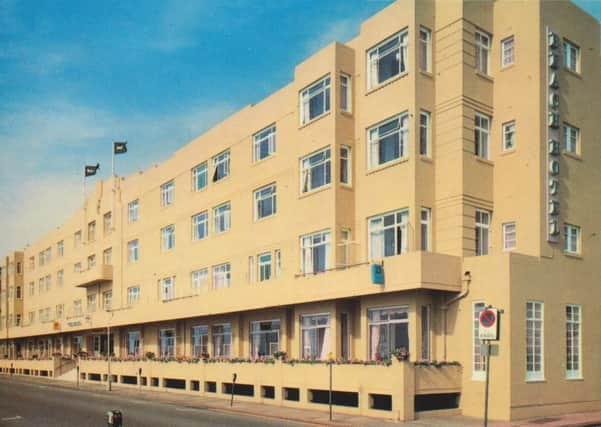

The Beach Hotel opened in one of the Heene Parade houses – No. 4 – in 1914.
Within 20 years the Beach had acquired the whole terrace, which was transformed in 1935–6 into a 94-bedroom art deco hotel.
The original Victorian terrace was completely encased.
Advertisement
Hide AdAdvertisement
Hide Ad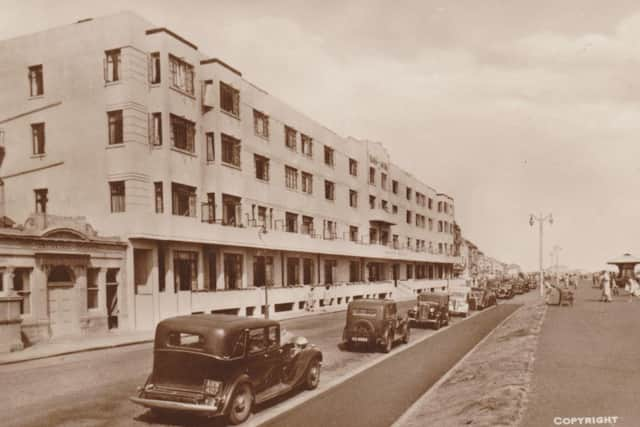

Further changes and improvements took place over the years. As late as 1969 only six of the bedrooms had integral bathrooms, but by 1972 this had risen to 76.
For three-quarters of a century, the Beach was one of Worthing’s leading hotels, receiving, for example, a complimentary review in 2004 from Paddy Burt, the Daily Telegraph’s hotel reviewer for 18 years.
She described the Beach as “a grand seaside hotel that’s not in the least bit grandiose”, adding that its balconies “suggested sunny summer afternoons of long ago”.
“There’s a tendency nowadays,” Burt concluded, “for old-fashioned hotels to be ‘modernised’. If this happened to the Beach Hotel, it would be ruined.”
Advertisement
Hide AdAdvertisement
Hide Ad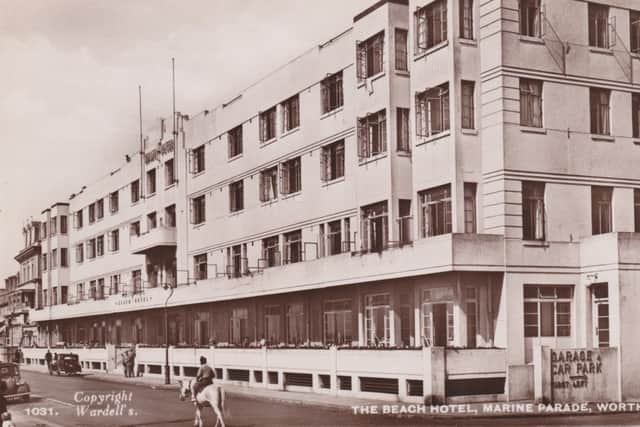

This risk was averted when the hotel was demolished in 2012.
Past and present
Although it is easy for those that immerse themselves in the history of a town to favour past over future, even those with a historical perspective have to accept that no town can be preserved in aspic.
Nonetheless many – perhaps most – of the fine buildings that have been lost to Worthing over the past 75 years could have been saved if more sensitive and imaginative decisions had been taken.
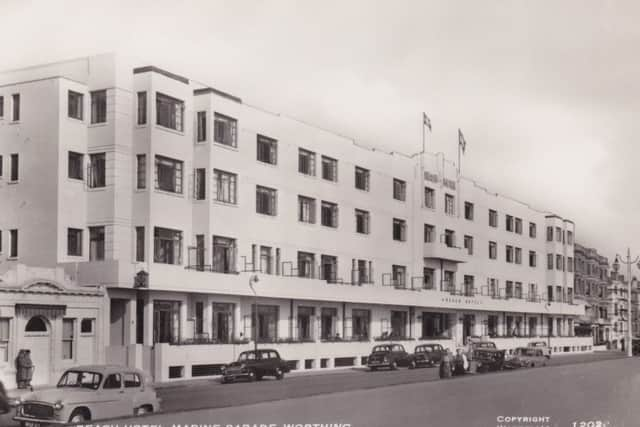

A few buildings, however, had perhaps come to the end of their useful lives – and this probably applied in the case of the Beach Hotel.
Advertisement
Hide AdAdvertisement
Hide AdSoon before the Beach closed in 2012, we visited the hotel and had a friendly and informative chat with Linda Martin, joint manager of the hotel with her brother (and both of them members of the Farnes family, which had owned the hotel from very early in its existence).
Linda – who helpfully provided me with documentary material from which some of the information in this article derives – told us that the hotel had reached the point where it simply could not be upgraded to 21st century requirements.
As we have seen, the Beach was converted from a relatively modest terrace built 150 years ago.
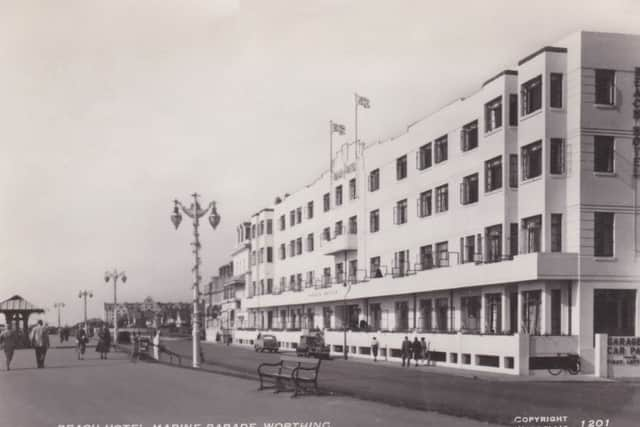

There is a limit to how much structural change can be accomplished within the fabric of an old building, and over the years the Beach had already been knocked about a great deal.
Replacing the Beach
Advertisement
Hide AdAdvertisement
Hide AdThe report by New Historic Environment Consulting that helped condemn the Beach Hotel to destruction said that it was a building “of modest quality and a clear departure from surrounding fabric in terms of both style and quality”.
The hotel had little “relationship with its 19th-century neighbours”, and its “horizontal emphasis” was “somewhat overbearing”.
It is difficult to disagree with these judgements. The 1935–6 makeover of Heene Parade had, in truth, resulted in a structure that looked rather heavy and ungainly.
Nonetheless, like most of the people of Worthing, I had great affection for the Beach Hotel, and was very sad to see it go.
Advertisement
Hide AdAdvertisement
Hide Ad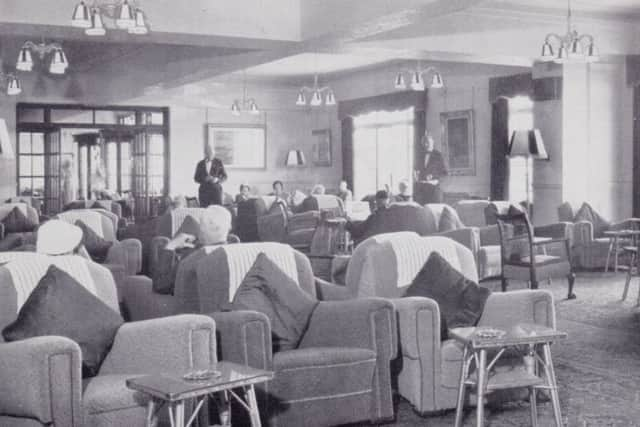

When a large building in such an important position is replaced, it is vital that great care and sensitivity be applied to considering what should replace it.
The kindest thing that can be said about the new Premier Inn and Beach Residences is that it is an opportunity wasted.
A less kind judgement is that it is a wholly inappropriate building that dominates in a most unbecoming way not only the western end of Worthing seafront but also, more specifically, its luckless immediate neighbour, the Burlington.
The new building is too bulky, and it has no sense of the context in which it stands.
Advertisement
Hide AdAdvertisement
Hide AdIf its predecessor had little “relationship with its nineteenth-century neighbours” and was “a clear departure from surrounding fabric”, the same applies even more comprehensively to the replacement.
The Premier Inn and Beach Residences is not the ugliest building on Worthing seafront – the field is a crowded one – but it is one of the most alien.
It looks as if it got lost on its way to its intended location in Croydon or Basingstoke.
The blogger Wolfie Wolfgang describes it as “bland” and “sleekly corporate”, although he discerns “a hint of deco homage” in the “the squat tower in the middle”.
I think he is being kind.
Advertisement
Hide AdAdvertisement
Hide AdThe tower looks like part of a 1970s hospital, and the “penthouse” section at the top of the Beach Residences has a cheap and untidy appearance.
In a different context the building might be acceptable. The problem is its total disregard for its surroundings.
It is a great pity that the opportunity was lost to put a genuine “landmark” building on this prominent and sensitive site just to the east of Heene Terrace.
Go to Bognor and take a look at the magnificent Esplanade Grande building with which Roffey has graced the seafront there. It takes your breath away.
Advertisement
Hide Ad